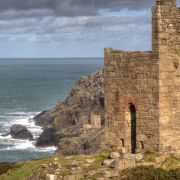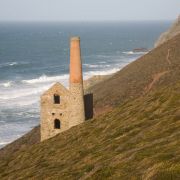Conwall's Stannary Towns
All tin was subsequently coined in each of these towns in the presence of a warden. This was to be done prior to St Michael’s Day in September of each year. All operatives within the Stannaries were then permitted to sell to whom they pleased, providing the coinage tax was paid to the crown.
This tax contravened the Magna Carta but was only abolished in 1838, at which time the Duchy of Cornwall claimed all mineral rights without approval from the Stannary Parliament. Furthermore, in 1837 the Duchy of Cornwall became the beneficiary of an English double tax on foreigners, which was imposed as coinage on Cornish tin production. This was not imposed on Devon tin production which was considered to be English.
The powerful rights of the Stannary Parliament caused great dissatisfaction to the landowning classes, as laws could be overturned by Stannary law if the tinners were upset.
The Court of Chancery recognised the immunity of the Stannary Courts in 1562 and Tinners’ Rights were claimed as recently as the 1980s in an attempt to override the poll tax. This failed to work as it was considered that the rights of tinners had fallen into disregard.
Locally mined tin and copper continued to be brought, twice a year, for assaying and stamping in the stannary towns until 1838. Other towns claimed some of the stannary rights over the years, but the principle towns continued to be the original five named in the charter.
Lostwithiel
Lostwithiel was the county capital in the 13th century. It was the administration centre for county affairs and the main trading centre for tin. Ironically, tin, which was the original source of the wealth of the town, eventually caused its decline. Rubble, from the mines on the moors, silted up the river Fowey, restricting the size of vessels that could use the quay.
Bodmin
Bodmin is the former county town of Cornwall. It was one of the few Cornish towns to be recorded in the Domesday Book, which was actually lodged in the town’s prison during the First World War. The name is derived from Bod-minachau, meaning the home of monks, suggesting that it was originally a religious settlement. The entry in the Domesday Book records that the town was held by St Petroc’s Church and that there were 68 houses and a market in the 11th century.Liskeard
Liskeard was originally Liscarret and was one of the holdings of the Count of Mortain when it was recorded in the Domesday Book. At that time it boasted a market, a mill and 250 sheep. It received its first charter in 1240 from Richard, Earl of Cornwall. Later it became one of the county’s coinage towns, returning 2 MPs until the first half of the 19th century. The mining industry played an important part in the town’s development, and in 1828 a canal was built, enabling ore and stone to be carried to Looe.
Helston
Helston was granted its charter in 1201 and was originally a thriving port. However, as the river Cober silted up over the years, the port gradually ceased to be. Coinagehall Street recalls the days when this was one of the stannary towns. Today it is probably most famous for the Furry or Floral Dance which takes place in May of each year.








